The Time Frame Needed for a Christmas Tree to Fully Grow
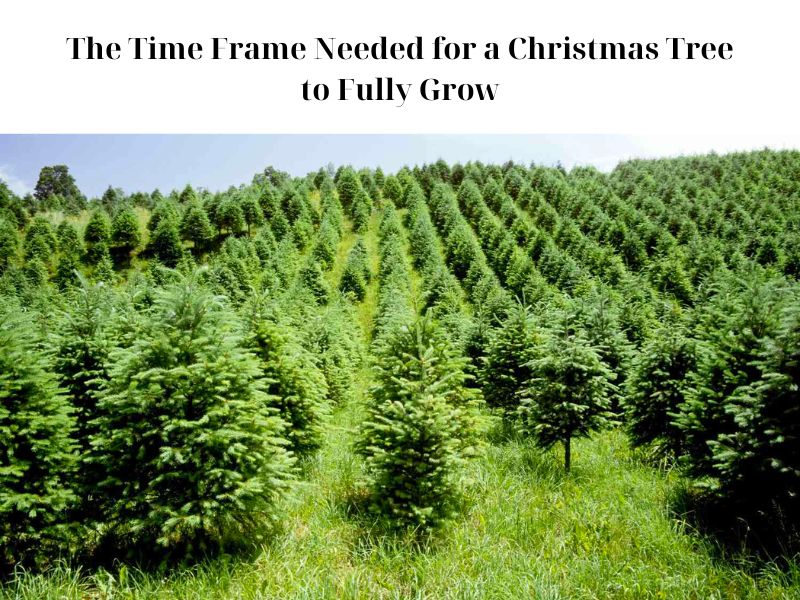
a. The Normal Growth Cycle for a Christmas Tree
The normal growth cycle for a Christmas tree varies depending on the tree species. Popular types like fir, pine, spruce, cypress, and cedar are commonly used for decorations worldwide. In the Southern states, Fraser fir, Douglas fir, and Leyland cypress are particularly favored.
Each tree has specific soil and water requirements, which contribute to varying growth rates. The National Christmas Tree Association states that growing a tree of typical height (six to seven feet) can range from four to fifteen years. On average, it takes around seven years for a Christmas tree to reach its desired height.
b. Elements that Impact the Development of a Christmas Tree
Various factors significantly impact the growth and development of a Christmas tree. The species of the tree greatly influences its growth rate, with some species growing faster and more suitable for earlier harvest.
The levels of light and humidity also play a crucial role in a tree’s growth. While trees require ample light to thrive, direct sunlight can potentially harm them. Maintaining the right balance of humidity is also essential for healthy growth. Additionally, the quality of the soil and proper fertilization are vital for providing the necessary nutrients and prolonging the lifespan of a Christmas tree.
Furthermore, the age and size of the tree affect its overall growth. Younger trees tend to grow at a faster pace, whereas older trees typically take longer to reach their fullest potential. These are the key elements that significantly impact the development of a Christmas tree.
Read more: best cyber Monday artificial Christmas tree deals
c. Guidance on Fostering a Healthy Christmas Tree
– Choose the right tree species: Different tree species have varying preferences for soil type, moisture level, and sun exposure. Consider your climate and geographic region, and select a species that suits those conditions.
– Find the perfect spot: Trees need ample space to grow and thrive. Pick a location that provides enough room for healthy growth, considering both current and future size, as well as the light requirements of the chosen species.
– Water consistently: Regular and consistent watering is crucial for tree growth and health. During the growing season, deep watering should be done once or twice a week, providing a total of 1-1.5 inches of water per week.
– Proper fertilization: Regular fertilizing is necessary to support healthy development. For mature trees, apply one pound of nitrogen per 1000 square feet of growing area annually. Use slow-release nitrogen fertilizers to avoid root stress and damage.
– Regular pruning: Pruning plays a vital role in encouraging healthy growth. Remove damaged, diseased, or weak branches to allow the tree to focus its energy on thriving.
– Prevent pests and diseases: Trees can be vulnerable to pests and diseases that can cause irreversible damage. Inspect the tree frequently and take preventive measures using organic pesticides or natural remedies to minimize these risks.
Factors That Influence the Growth Velocity of a Christmas Tree
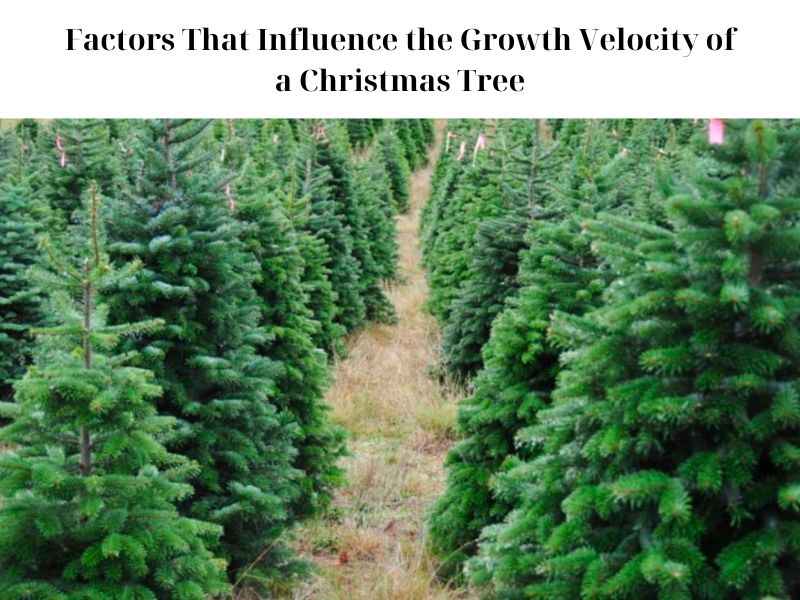
a. The Ideal Soil Type for Christmas Tree Propagation
The ideal soil for growing Christmas trees must have excellent drainage and retain moisture effectively. It should also be rich in organic matter and have a pH balance that provides the necessary nutrients for healthy tree growth.
Sandy loam soil is commonly recommended by experts as the best soil type for Christmas tree propagation, as it offers good drainage and is easy to work with. Moreover, using soil with a pH level ranging from 6.0 to 7.5 can promote growth and ensure the trees’ overall well-being.
Read more: Understanding the Concept of a Pre-Lit Christmas Tree
b. The Amount of Water Required for a Thriving Christmas Tree
Growing a healthy Christmas tree requires providing an adequate amount of water. The exact water requirements will vary based on the tree species, size, and local climate conditions. As a general guideline, a Christmas tree needs at least one quart of water per inch of trunk diameter daily. For instance, if you have a six-foot tree with a three-inch diameter trunk, it would need approximately three quarts of water every day. Neglecting to provide sufficient water can result in dry needles, drooping branches, and a shorter lifespan for the tree.
As recommended by the National Christmas Tree Association, properly watering the tree can extend its freshness for up to four weeks or even longer. It is crucial to keep the tree stand’s water reservoir filled and monitor the water level daily, especially during the initial days after purchase when the tree is most thirsty. Adding certain substances like aspirin or sugar to the water can help the tree absorb it more efficiently and preserve its freshness.
c. The Optimal Climate for Christmas Tree Development
The optimal climate for Christmas tree development requires a cool and moist environment, with temperatures ranging between 20 to 40 degrees Fahrenheit. It is best to plant these trees in the fall, ideally before the first frost.
Areas with high rainfall, typically around 20 to 40 inches annually, are ideal for growing Christmas trees. Additionally, deep and fertile soil is highly recommended for Christmas tree cultivation. Different types of Christmas trees can thrive in various climates, so farmers should consider their region’s climate and personal preferences when selecting the best species to grow.
Different Kinds of Christmas Trees and Their Longevity
1. Balsam Fir – This tree is favored for its vibrant green color and pleasant aroma. With proper care, it can last approximately four to six weeks.
2. Douglas Fir – With its symmetrical shape and blue-green needles, the Douglas fir can stay fresh for up to six weeks when properly cared for.
3. Fraser Fir – Known for its sturdy branches, the Fraser fir is perfect for displaying heavy ornaments. With proper care, it can last around six weeks.
4. Noble Fir – The Noble fir boasts strong branches and a classic Christmas tree shape. With proper care, it typically stays fresh for six to eight weeks.
5. Scotch Pine – The Scotch pine is admired for its bright green needles and sturdy branches. It typically holds its freshness for about four to five weeks with proper care.
6. Virginia Pine – Offering a bushy appearance and a pleasant fragrance, the Virginia pine is a beloved option that can stay fresh for up to four weeks with proper care.
7. White Pine – Delicate and graceful, the white pine features soft, blue-green needles. With proper care, it usually lasts around three to four weeks.
Fast-Growth Christmas Trees
Leyland Cypress
Leyland Cypress, or Cupressus leylandii, is a popular dry cypress variety frequently chosen as a Christmas tree in the southern parts of the United States. These trees can grow rapidly, often reaching heights of three feet per year in suitable conditions.
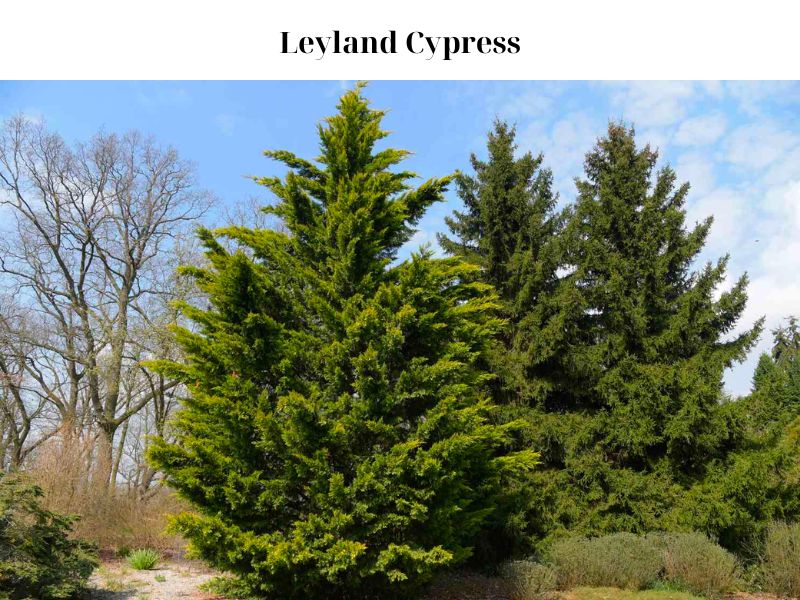
Arizona Cypress
Arizona cypress, scientifically known as Hesperocyparis arizonica, flourishes in Arizona and West Texas, while it can also thrive in southeastern states like Louisiana, Mississippi, Alabama, parts of the Florida panhandle, and North Carolina. This resilient and adaptable cypress embodies the spirit of the American Southwest, adding a touch of natural beauty to its surroundings.
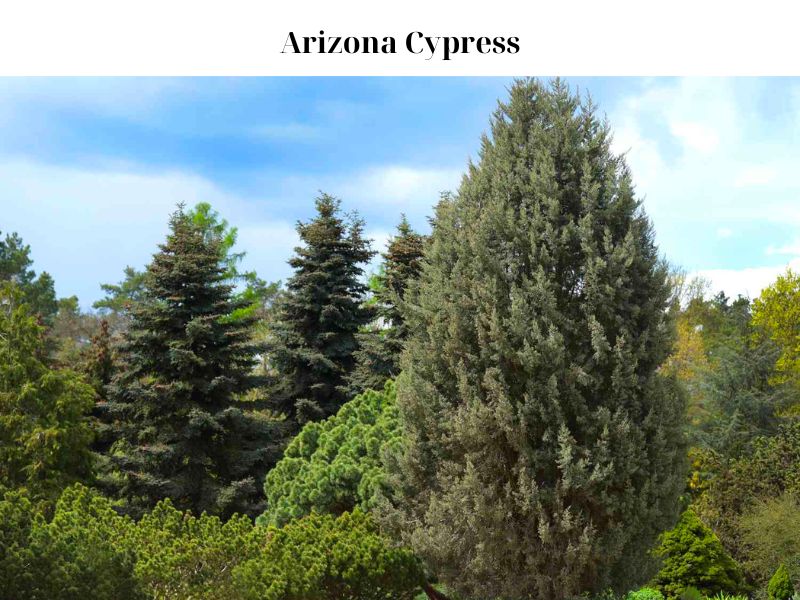
Moderate-Growth Christmas Trees
Fraser Fir
Fraser firs are cherished favorites in the southern Appalachian region, notably thriving in North Carolina, Virginia, and Tennessee. According to the National Christmas Tree Association, it takes approximately seven years for these magnificent trees to reach an average height of six to seven feet. These beauties are a staple of the holiday season and are adored by many.
Canaan Fir
The Canaan Fir, scientifically known as Abies balsamea var. phanerolepies, is an evergreen tree species that thrives in Virginia and West Virginia. It exhibits a moderate growth rate, typically reaching two to three feet per year, similar to Fraser and balsam firs.
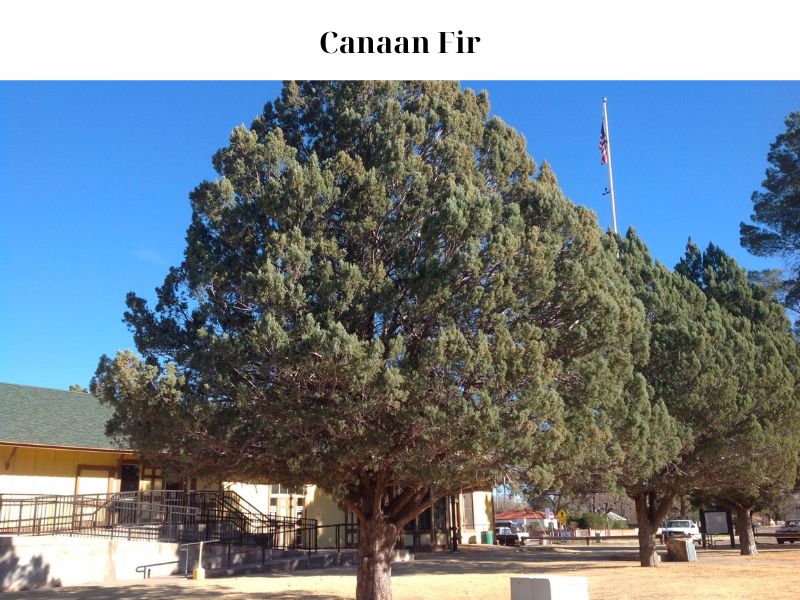
Slow-Growth Christmas Trees
Eastern Redcedar
The Eastern redcedar, or Juniperus virginiana, is commonly found in Texas and Oklahoma, but its range extends beyond the South. Despite its name, it is actually a juniper, not a cedar. This tree grows at a moderate rate of approximately one to two feet per year when planted.
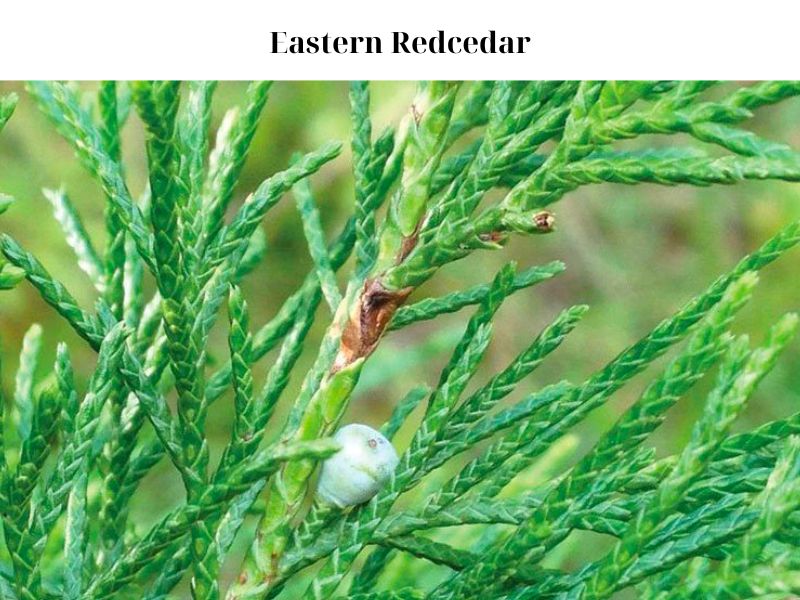
Virginia Pine
Virginia Pine, scientifically referred to as Pinus virginiana, exhibits a moderate growth rate, as stated by the University of Kentucky Department of Horticulture. Although, given optimal conditions, this particular species can attain an impressive height of 40 feet and a width of 30 feet. It predominantly thrives in the states of Virginia and Kentucky, but can also be spotted in other southern regions such as Tennessee, Mississippi, and Alabama.
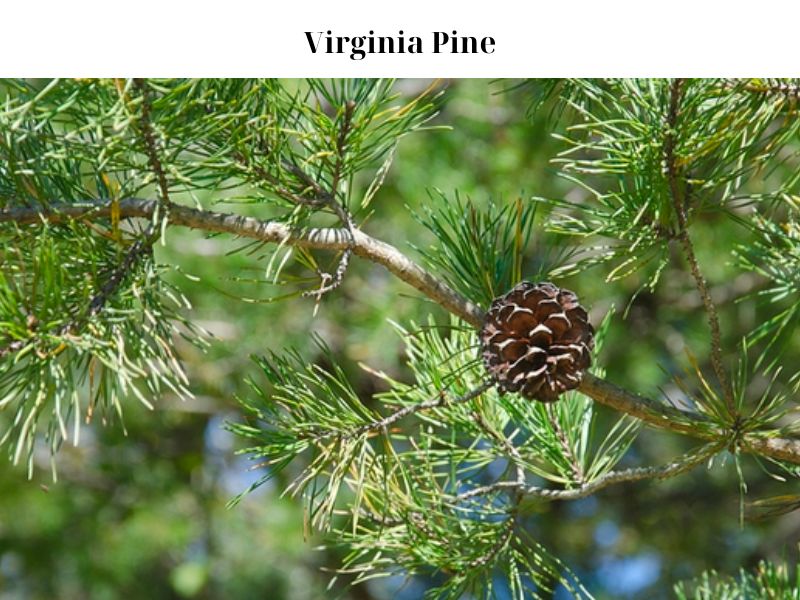
Longevity of Freshly Cut, Harvested, and Pre-cut Christmas Trees
Live trees, with proper care like regular watering and keeping them away from heat sources, can last between 3-4 weeks. Cut-down trees, being already dead when cut, typically last between 2-3 weeks.
Lastly, pre-cut Christmas trees, harvested earlier in the year, have the shortest lifespan of all, lasting between 1-2 weeks depending on the time of harvest and how well they were cared for during transport and storage.
Benefits Of Choosing A Real vs Manufactured or Pre-cut Tree
Choosing a real Christmas tree brings multiple benefits to the environment and our local communities. When I walk among the trees, I feel joyful, surrounded by the refreshing scents of pine, spruce, cypress, cedar, and fir. Not only do these magnificent trees provide a heavenly experience, they also play a crucial role in carbon storage and oxygen production. Moreover, they help stabilize soil, protect water supplies, and create habitats for wildlife.
By opting for a real tree, we support sustainable practices. Most of these trees are grown on land unsuitable for other crops, which helps conserve valuable forests by reducing the need for harvesting from the wild. In contrast, artificial trees, largely made in Chinese factories, are constructed using petroleum-based materials. Once they are discarded, they contribute to landfill waste and take centuries to decompose.
It’s heartening to note that the Christmas tree industry in the United States creates over 100,000 jobs and provides a sense of local support. Every state in the country, including Hawaii, cultivates Christmas trees, contributing to the economy and upholding a cherished tradition. This year alone, over 35 million trees will be cut and replanted, securing the continuation of this beautiful tradition for years to come.
Common Mistakes to Avoid When Growing Your Own Tree
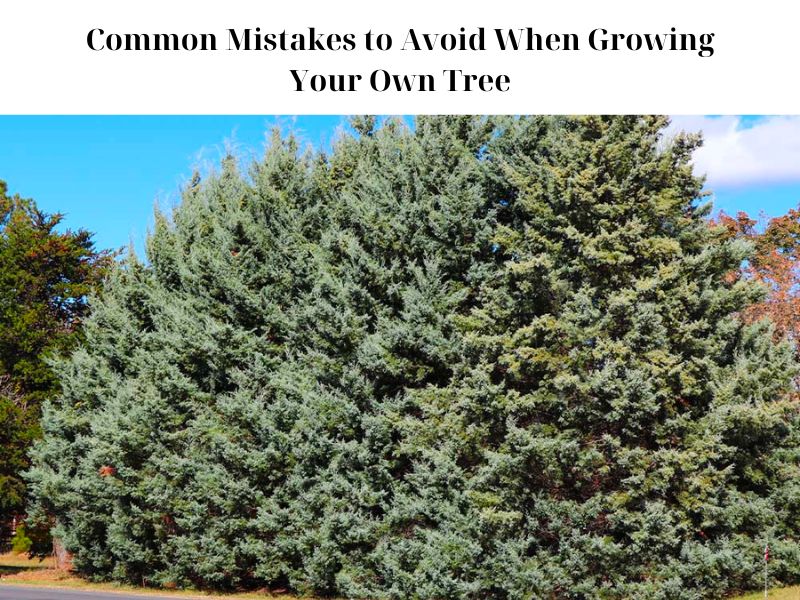
Choosing an unsuitable planting spot:
Choosing an unsuitable planting spot can result in stunted growth, vulnerability to wind and sun damage, and increased susceptibility to pests and diseases. Ensure adequate drainage, sufficient sunlight, and ample space for the tree’s unhindered growth, without it having to compete with other plants.
Ignoring tree condition and selection
Ignoring tree condition and selection can have detrimental effects on your tree’s growth and productivity. It is crucial to choose a healthy tree that is well-suited for your climate and soil type. Failing to do so may lead to stunted growth, limited fruit or flower production, and increased vulnerability to pests and diseases. Ensure you make informed decisions to promote the health and success of your trees.
Planting too deep
Planting a tree too deep can lead to root suffocation, hindering its ability to access water and nutrients. Ensure optimal planting depth by covering the root ball with soil, leaving the trunk exposed. This ensures the tree’s healthy growth and development.
Digging a hole that’s insufficiently sized
Digging a hole that’s insufficiently sized can negatively impact root growth, hindering tree development and increasing vulnerability to drought. It is crucial to ensure that the hole is at least twice the width of the root ball.
Inappropriate watering techniques
Improper watering techniques can have detrimental effects on your tree. It is crucial to ensure that you provide deep and infrequent watering to promote the growth of deep roots. Avoid the accumulation of standing water, as it can lead to root rot. Remember, maintaining a well-balanced watering schedule is essential for the health and vitality of your tree.
Unneeded or wrongly staked trees
Unneeded or wrongly staked trees can result in weak trunk development. It’s crucial to assess whether staking is necessary to prevent toppling and ensure that the stake is not excessively tight, as prolonged use can harm the trunk.
Most preferred variety of Christmas tree
The most preferred Christmas tree in the UK is the Nordmann fir. According to the British Christmas Tree Growers Association (BCTGA), around 80% of Christmas trees bought in the UK are Nordmann firs. They are loved for their vibrant green color and minimal needle shedding before Christmas Day.
To keep the tree healthy, it requires proper care. With good care, a Nordmann fir can remain fresh and vibrant until early January.

Hi, I’m Eugene B. Conley – the CEO of cybermondaychristmastree.com. I was born on December 13, 2000, and I’m a proud Sagittarius. I currently live at 3524 Reeves Street in Green Bay, WI 54301.
Before becoming the CEO of cybermondaychristmastree, I worked as a Meter Reader at The Pink Pig Tavern. While I enjoyed my time there, I had a passion for e-commerce and technology. I decided to pursue my dreams and started my own online venture.
At cybermondaychristmastree, we offer the best deals on Christmas trees during the Black Friday season, from Amazon to Walmart and many more. We help customers find the perfect tree for their homes at the most affordable prices, while also making their holiday shopping experience seamless.
Thank you for taking the time to read about me and my journey at Cyber Monday. I am committed to providing excellent service and quality products to all our customers.
